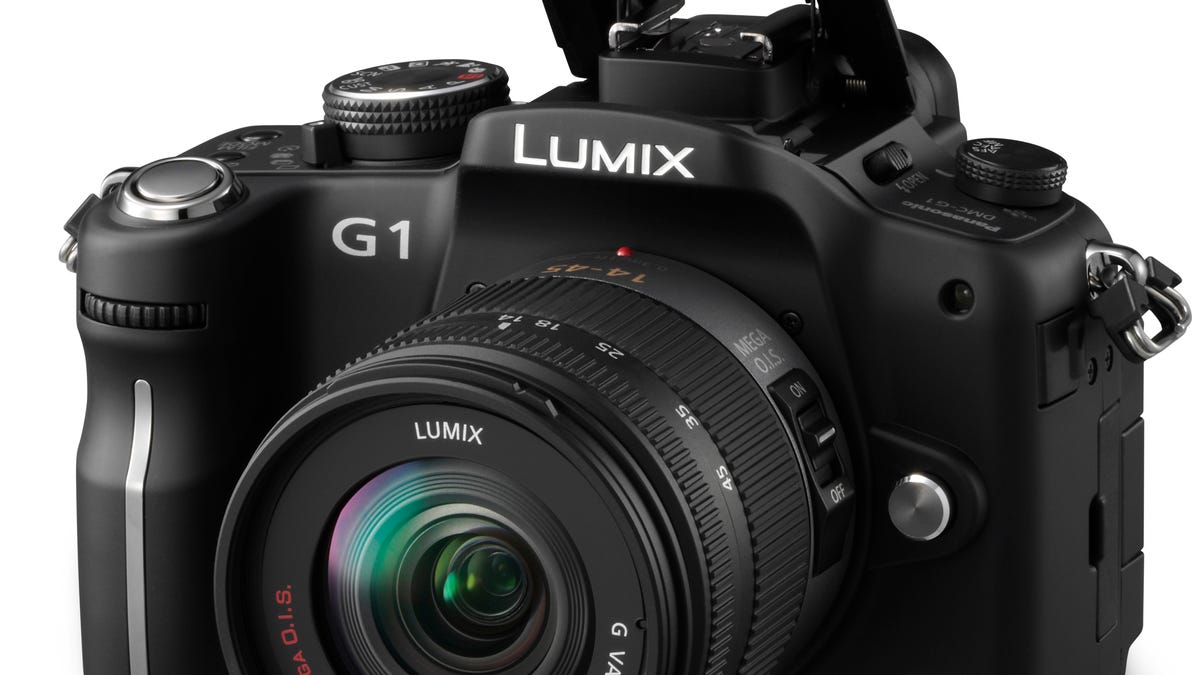Panasonic unveils first Micro Four Thirds camera
Will this camera's interchangeable lens design woo enthusiasts who don't want the bulk of a dSLR?

While it's too soon to tell whether it'll be good, or popular, or both, the Panasonic Lumix DMC-G1 does seem to be one of the more interesting camera announcements this year--and that's saying a lot, given how many innovative midrange and high-end dSLRs we've seen (and still have yet to see). The first non-dSLR camera to offer the flexibility of interchangeable lenses, at the very least the G1 promises to shake up the enthusiast compact market now dominated by models like the
With the G1 specifically, and the Micro Four Thirds standard in general, Panasonic hopes to attract those users who want the advantages of interchangeable lenses and the power of a dSLR, but in a more compact camera. And to a certain extent, the G1's specs read like those of an entry-level dSLR, including a 12-megapixel Live MOS chip with the same expanded photosite design of the sensor in the Lumix DMC-LX3) and continuous-shooting speed of 3fps for an unlimited number of JPEGs and seven raw.
Unlike dSLRs, though, this one will come in colors: two-tone black and blue, and black and red, in addition to the more sedate solid black.
In the few minutes I had to hold it, it felt very comfortable and well made, with a metal lens mount that you rarely find in the cheap dSLRs. Plus it's definitely smaller than most dSLRs. Another big attraction will be the 3-inch, 460,000-dot flip-and-twist LCD. It will offer a full complement of manual and semimanual features as well as the automatic and semiautomatic capabilities common to all current Panasonic's, like Intelligent Auto mode. There's also a mode in which you can preview changes to settings like aperture and shutter speed, to gauge the effects in advance.
There are a couple potential downsides, however, when sizing up the G1 against dSLR competitors. Autofocus performance, for one. The G1 uses contrast AF, compared with phase-detect AF in dSLRs (though dSLRs with Live View generally use contrast AF in that mode). Contrast AF can be slower than phase detection, and not very efficient in low light, which is, well, low contrast. The G1 includes a Quick AF option, which doesn't wait for you to press the shutter button before it starts focusing; if it's like most continuous-focusing mechanisms, I suspect it will be a bit annoying.
Another drawback is its lack of an optical viewfinder. The G1 uses an EVF; a very nice 1.4 million dot EVF with 100 percent scene coverage, but an EVF nonetheless. They usually black out or freeze just after shooting, which can definitely sully the dSLR-like experience you probably want to have with this camera. Also, no movie capture in the G1; Panasonic plans to ship a model with movie capabilities next year.
At launch, Panasonic will offer two lenses for the G1, both with optical image stabilization: the Lumix G Vario f3.5-5.6 14-45mm (28-90mm equivalent) and the Lumix G Vario f4-5.6 45-200mm (90-400mm equivalent). Though Leica lenses are likely in the Micro Four Thirds future, these are Panasonic lenses. Panasonic will also offer a converter which will allow you to mount standard Four Thirds lenses on the G1, but AF will only function if the lenses support contrast AF.
The G1 and its supporting accessories will be available in November. Though pricing has not yet been set, Panasonic says the G1 with the 15-45mm lens should cost less than $800.

